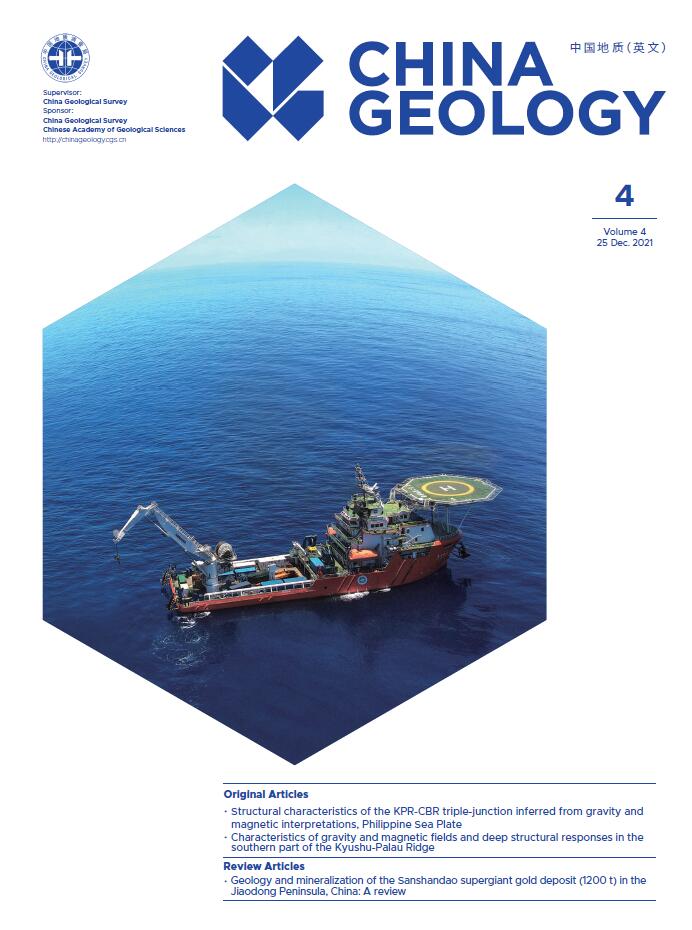| Citation: | Xin Wang, 2021. New observation on seed/ovule position in the fruit of Archaeanthus and its systematic implications, China Geology, 4, 752-755. doi: 10.31035/cg2021026 |
New observation on seed/ovule position in the fruit of Archaeanthus and its systematic implications
-

-
References
Arber EAN, Parkin J. 1907. On the origin of angiosperms. Journal of the Linnean Society of London, Botany, 38(263), 29–80. doi: 10.1111/j.1095-8339.1907.tb01074.x. Buzgo M, Soltis PS, Soltis DE. 2004. Floral developmental morphology of Amborella trichopoda (Amborellaceae). International Journal of Plant Sciences, 165(6), 925–947. doi: 10.1086/424024. Canright JE. 1960. The comparative morphology and relationships of the Magnoliaceae. III. Carpels. American Journal of Botany, 47(2), 145–155. doi: 10.1002/j.1537-2197.1960.tb07107.x. Cronquist A. 1988. The Evolution and Classification of Flowering Plants. Bronx, New York Botanical Garden, 555. Dilcher DL, Crane PR. 1984. Archaeanthus: An early angiosperm from the Cenomanian of the Western Interior of North America. Annals of the Missouri Botanical Garden, 71(2), 351–383. doi: 10.2307/2399030. Friis EM, Pedersen KR, von Balthazar M, Grimm GW, Crane PR. 2009. Monetianthus mirus gen. et sp. nov, a nymphaealean flower from the Early Cretaceous of Portugal. International Journal of Plant Sciences, 170(8), 1086–1101. doi: 10.1086/605120. Ji Q, Li H, Bowe M, Liu Y, Taylor DW. 2004. Early Cretaceous Archaefructus eoflora sp. nov. with bisexual flowers from Beipiao, Western Liaoning, China. Acta Geologica Sinica (English edition), 78(4), 883–896. Liu ZJ, Wang X. 2018. A novel angiosperm from the Early Cretaceous and its implications on carpel-deriving. Acta Geologica Sinica (English edition), 92(4), 1293–1298. doi: 10.1111/1755-6724.13627. Mendes MM, Grimm GW, Pais J, Friis EM. 2014. Fossil Kajanthus lusitanicus gen. et sp. nov. from Portugal: Floral evidence for Early Cretaceous Lardizabalaceae (Ranunculales, basal eudicot). Grana, 53(4), 283–301. doi: 10.1080/00173134.2014.932431. Miao Y, Liu ZJ, Wang M, Wang X. 2017. Fossil and living cycads say “No more megasporophylls”. Journal of Morphology and Anatomy, 1, 107. Romanov MS, Dilcher DL. 2013. Fruit structure in Magnoliaceae s.l. and Archaeanthus and their relationships. American Journal of Botany, 100(8), 1494‒1518. doi: 10.3732/ajb.1300035. Sun G, Dilcher DL, Zheng S, Zhou Z. 1998. In search of the first flower: A Jurassic angiosperm, Archaefructus, from Northeast China. Science, 282, 1692–1695. doi: 10.1126/science.282.5394.1692. Sun G, Ji Q, Dilcher DL, Zheng S, Nixon KC, Wang X. 2002. Archaefructaceae, a new basal angiosperm family. Science, 296, 899–904. doi: 10.1126/science.1069439. Wang X. 2018. The Dawn Angiosperms. Cham, Switzerland, Springer, 407. Wang X, Hu GW, Liao WB, Guo XM, Cui DF. 2021. On the orientation of the carpel sutures in Fabaceae. Plant Science Journal, 39, 208–210. doi: 10.11913/PSJ.2095-0837.2021.20208. Wang X, Liu ZJ, Liu W, Liao W, Zhang X, Liu Z, Hu G, Guo X, Wang Y. 2020. Stepping out of the shadow of Goethe: For a more scientific plant systematics. Chinese Bulletin of Botany, 55(4), 505–512. Wang X, Luo B. 2013. Mechanical pressure, not genes, makes ovulate parts leaf-like in Cycas. American Journal of Plant Sciences, 4(12A), 53–57. Wang X, Zheng XT. 2012. Reconsiderations on two characters of early angiosperm Archaefructus. Palaeoworld, 21(3–4), 193–201. doi: 10.1016/j.palwor.2012.10.002. Zhang X, Liu W, Wang X. 2017. How the ovules get enclosed in magnoliaceous carpels. PLOS ONE, 12(4), e0174955. doi: 10.1371/journal.pone.0174955. -
Access History

-
Figure 1.
Infructescence, fruits, and in situ seeds/ovules of Archaeanthus linnenbergeri. a‒an infructescence. IU15703-2300′. Bar = 5 mm. b‒the counterpart of the infructescence is shown in Fig. 1a. IU15703-2300′. Bar = 5 mm. c‒detailed view of the fruit arrowed in Fig. 1a. Note the in situ seeds/ovules (arrows) and their spatial relationship relative to the adaxial (AD) and abaxial (AB) margins of the fruit. Bar = 1 mm. d‒detailed view of the two seeds/ovules (within the left rectangle in Fig. 1c). Note the organic attachment of seeds/ovules (bottom arrows) to the abaxial margin (AB) of the fruit and the gap (between the two top arrows) between the seeds/ovules and adaxial margin. Bar = 0.5 mm. e‒adaxial insertion of a row of seeds/ovules inside the fruit marked by the arrow in Fig. 1b. Note the adaxial margin (AD) of the fruit and the smooth outlines of the in situ seeds/ovules. Bar = 1 mm. f‒a stern fruit stalk. IU15703-2318′. Bar = 5 mm. g‒detailed view of the three seeds/ovules (within the right rectangle in Fig. 1c). Note one of the seeds/ovules (1) close to the abaxial margin (AB) and the other two (2, 3) attached to the adaxial margin (AD) in the same fruit. Bar = 0.5 mm.
-
Figure 2.
Sketch of an Archaeanthus linnenbergeri fruit showing the seed (SE)/ovule(OV) insertion along both ventral/adaxial (AD) and dorsal/abaxial (AB) margins of the fruit.





 DownLoad:
DownLoad:
